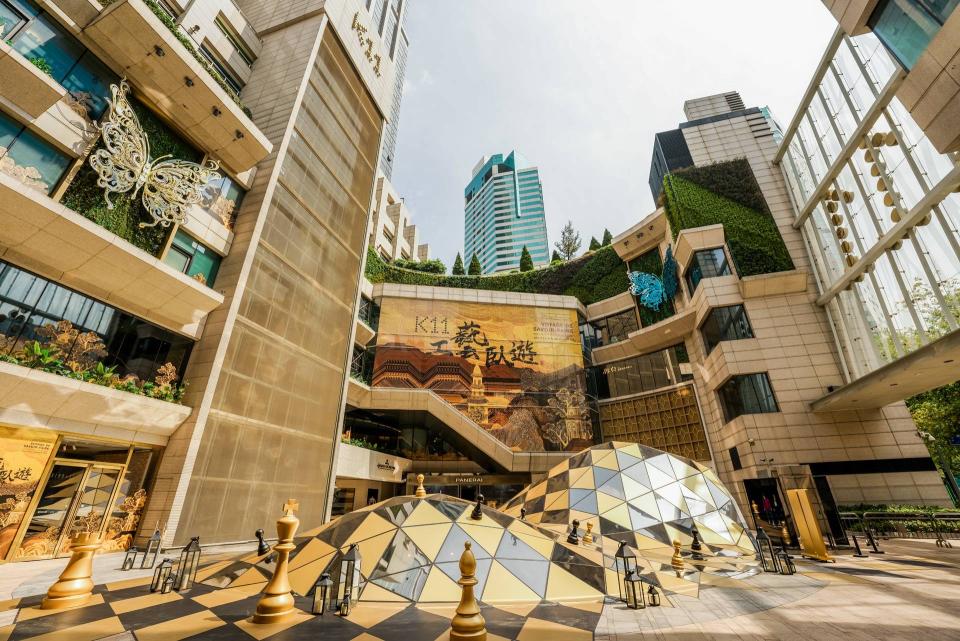CEO Talks: Adrian Cheng Is Bringing ‘Cultural Retail’ to China
- Oops!Something went wrong.Please try again later.
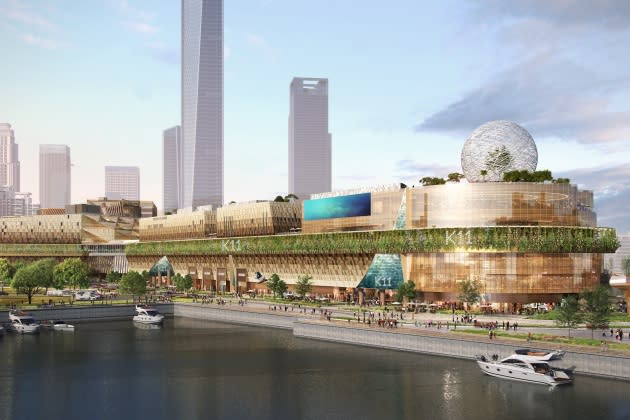
Developers and retailers need to pick their spots, and Hong Kong-based Adrian Cheng is gung-ho about the Greater Bay Area — an agglomeration of 11 Chinese cities sheltering more than 85 million people, a good many of them young and rich.
“China is very, very big, and we need to really focus on the right cities,” said Cheng, chief executive officer of New World Development and founder of K11 Group.
More from WWD
Among the Mainland Chinese cities on his short list are Guangzhou, Shenzen, Hangzhou and Shanghai, and indicators abound about the wealth, and potential, of the GBA. “It’s bigger than South Korea, so the market size is there,” he noted.
The third-generation scion of one of the biggest business dynasties in Asia — spanning from property development and department stores to blockchain startups — Cheng lobbed out one example of staggering buying power in Hangzhou, where Alibaba is headquartered and where New World China recently began selling off units in a condominium project.
“We sold $1 billion worth of apartments in one day. So we can see that the demand is very strong over there,” he said, dialing in over Zoom from Seoul, where he was attending Frieze art week.
Cheng noted that the Greater Bay Area contains only about 6 percent of the China population, but accounts for roughly 13 percent of the country’s GDP.
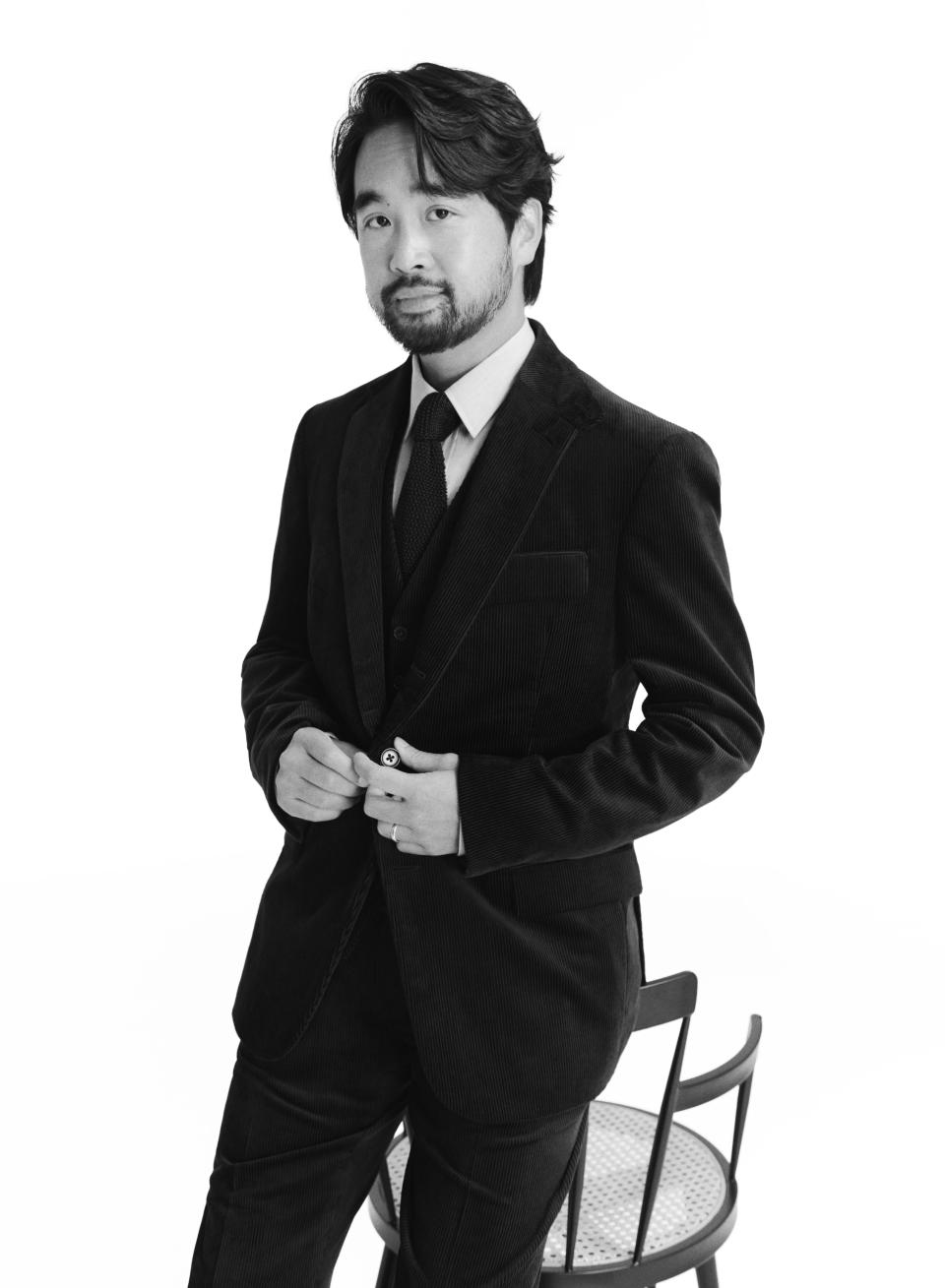
“There’s a lot of potential. It’s the Silicon Valley of China, so there’s many young professionals there and they need to set up for their families,” he said.
Beyond economic indicators, Cheng also has faith in his concept of “cultural retail,” incorporating art, craft and fashion exhibitions into K11 developments.
He’s now also ramping up the sustainability quotient, exemplified by the forthcoming K11 Ecoast in Shenzen, a vast waterfront complex incorporating a mall, multipurpose art space, office building and promenade.
The project, scheduled to open at the end of 2024, is billed as a showcase for a circular lifestyle and waterfront conservation, with a facade composed of recycled materials. Participating architects include David Chipperfield, Sou Fujimoto and OMA, which built the wonky CCTV building in Beijing.
And it’s only one of 21 new K11-branded projects Cheng plans to add on Mainland China between now and 2026, emblematic of his confidence in China and bringing the total to 38. Investments — in land, assets and infrastructure for retail, residential commercial and hospitality projects — are to top 1.4 billion euros over the next year.
These projects will spread over 2.5 million square meters, or 26.9 million square feet, of property and include 30 new Rosewood Hotels.
The executive acknowledged that the coronavirus pandemic has made it a tough couple of years in China, but indicators for the first half of 2022 for his company are auspicious even as the COVID-19 lockdowns across major Chinese cities continue. As of earlier this month, more than 70 Chinese cities were in full or partial lockdown, impacting over 300 million people.
Still, K11 mall sales in the first half grew by 39 percent compared to a market average of just 4 percent, Cheng said, crediting the latter figure to the National Bureau of Statistics of China.
What’s more, occupancy rates at K11 malls in first-tier cities was 92 percent in the first half.
Cheng cited other pockets of strength, with its K11 property in Wuhan Guanggu up 65 percent in the first six months of 2022.
New World Development is a vast enterprise boasting $77.4 billion in assets and tentacles that stretch into education, health care, insurance, aircraft-leasing and crypto. But its three main businesses are property development, hospitality and retail, including 27 New World department stores, the giant Chow Tai Fook chain for jewelry and watches, plus luxury distributor Luxba Group.
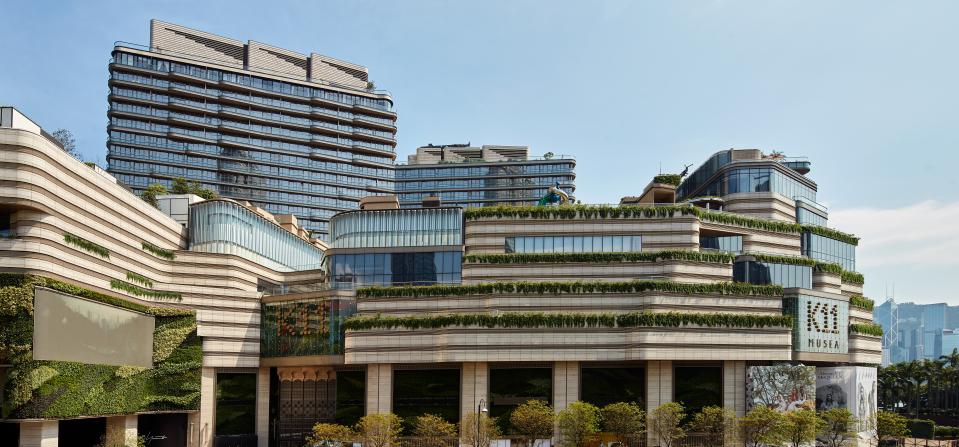
While acknowledging that the retail and property markets on the Mainland are “not at their best,” Cheng is confident that his company will be in a strong position for a rebound, with a host of developments set to open in 2025 and beyond.
“I’m very confident in our expansion strategy,” he said. “We don’t care about short-term types of cyclical downturns, or the pandemic, because we’re looking at a much longer horizon.”
In an interview, Cheng spoke about the long-term potential of China, the rise of domestic fashion brands, his views on physical versus digital, and the new craze for role-playing games:
WWD: Do you anticipate sustained domestic consumption, even when Chinese are free to travel the world?
Adrien Cheng: Yes, I do, because the central government proposed accelerating the implementation of “dual circulation,” a new development cycle in which the domestic economy is the primary driver, while the international economy plays a supportive role. I think China will continue to introduce measures to boost domestic demand, and build up domestic consumption and investment.
Compared with other countries, China’s domestic consumption as a proportion of GDP is still very low. So there’s a lot of room for them to really boost domestic demand and domestic consumption. Disposable income in certain cities, especially in the first year, will still be growing.
WWD: You invest mainly in physical projects: malls, hotels, cultural spaces, condos. What’s your view on digital versus physical consumption?
A.C.: People still need to go to physical spaces, whether you’re shopping, staying in a hotel, or going out to eat. But as you know, China has very, very strong online presence, and the digital ecosystem is very strong. And so people are talking about omnichannel becoming much, much tighter.
We have an online platform and apps called K11 Go, through which we curate merchandise to support online traffic. It’s also a brand awareness and CRM tool and we’ve seen very good conversion rates during livestreamed selling events on Douyin. So the entire system is phy-gital. We need both. We cannot just focus on the physical space because we need to extend our customer lifecycle, encourage repeat purchases, whether physical or online, and create a stickiness between us and our customers.
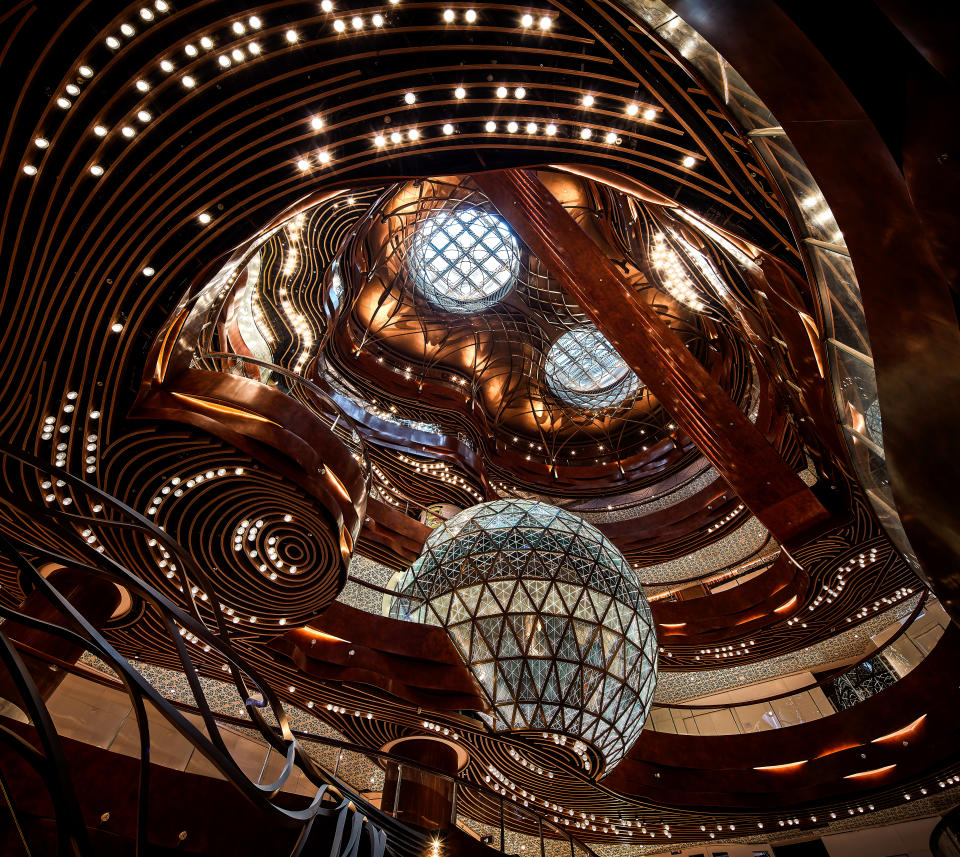
WWD: You’ve been a pioneer in “cultural retail.” What does it entail, and why you think this is the future?
A.C.: We started this 14 years ago, basically combining museum-quality cultural experiences with a physical space, whether it’s a shopping mall, office facility or condominium, so when you go into any of our physical spaces, it’s like a curated exhibition. Cultural retail brings high traffic to physical spaces, and in return visitors get a cultural experience where they can appreciate culture, creativity and design.
For example, we recently mounted the biggest NFT art exhibition in Asia at our K11 Musea in Hong Kong. A lot of crypto-native people came to see the show, which was spread throughout the retail space. We had 20,000 people who subscribed and joined an art tour, and afterwards most of them went to eat and to shop. We also had NFT-related merchandise for them to buy.
We are very accessible, because it’s a hybrid museum plus a commercial space. And because of that, people are very willing to come. It brings in new customer segments, and VIPs, too. Consumers clearly welcome the museum-retail concept as our footfall and sales have increased. At our K11 in Guangzhou, we set up a golden forest by New York set designer Stefan Beckman, which attracted 150,000 people over three days. I want to create a Silicon Valley for art and culture, which I believe is equally important for social and economic development.
WWD: Can you elaborate on the business model for cultural retail? Are the cultural elements a cost, or revenue generator?
A.C.: Some of our marketing budget goes into curating and creating these cultural experiences, but we also generate revenues because most exhibitions are ticketed, and some have attracted as many as 350,000 visitors. We also have exhibition-related merchandise, and all this happens in the retail space. This encourages repeat visits and repeat purchases because people are experiencing something beyond a normal white box. The beauty is that K11 has become a content provider. We have always been democratizing art. Fashion, art, food, music, design — they all play a part in shaping culture. Next-generation consumers have a growing interest in art and culture and I don’t believe it should be reserved for the select few.
WWD: You’re also stepping up sustainability across your developments. Why?
A.C.: The new generation in China is very focused on ESG and sustainability, so the circular economy is a very important concept that we are trying to put into our entire experience as well. We live at a time when profits and purpose are equally important. My core business mission is to create shared value, which means connecting my business success with social progress and focusing on empowering culture and creativity.
One of the things I brought to the company was our New World Sustainable Vision 2030 roadmap, which references the United Nations Sustainable Development Goals with metrics and science-based targets so every department has the same clearly defined goals. We are deeply committed to ESG throughout all our business operations and hope to be a role model for other developers and companies.
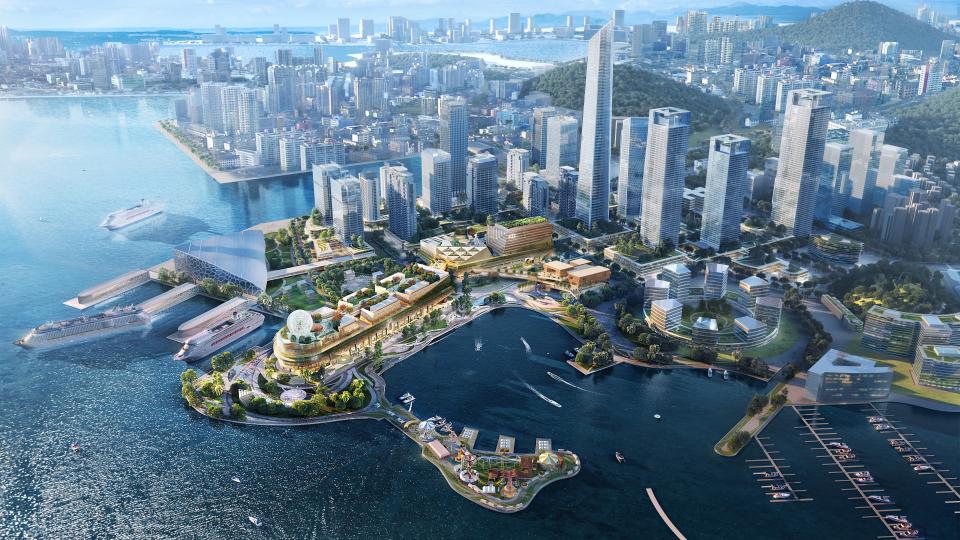
WWD: You seem focused on the next generations of consumers, how come?
A.C.: Millennials and Gen Z are more globally connected. They have strong spending power, greater influence and high expectation of brands and businesses, so it is imperative that we deliver on their needs.
Gen Z focuses a lot on knowledge capital, because they’re so well educated and sophisticated as well. They want to build their knowledge, so we do a lot of education throughout the customer experience. On our K11 Go platform, we have master classes and hundreds of webinars on many different topics, from NFTs and Web3 to art and architecture. We want to engage with them and really have a conversation with them.
In China, every three to five years, there’s a paradigm shift, a change in consumer habits. We see that in the quest for knowledge capital, and in Millennials wanting physical experiences to be more immersive, whether it’s via AR, VR or XR. If you go to China today, you’ll see that immersive, live-action role-playing centers are the hottest thing right now. You get a script and everyone becomes an actor. Murder mysteries are popular, for example, where all participants help solve a crime.
WWD: You’ve stated an ambition to reshape Asia and build more bridges of understanding between the East and West. What’s behind that?
A.C.: I think, globally, the next generation has a growing appreciation for art and culture, technology and sustainability. So my mission is to help bridge this gap and create a cultural dialogue between East and West.
Five years ago, I created the K11 Craft and Guild Foundation, to bring attention to fast-disappearing Chinese know-how. For example, we are doing a big exhibition in Shanghai on a black lacquer technique incorporating silk embroidery that was exported [to Europe] back in the 17th century. So there was a bridge a few hundred years ago — and now we’re building this bridge again.
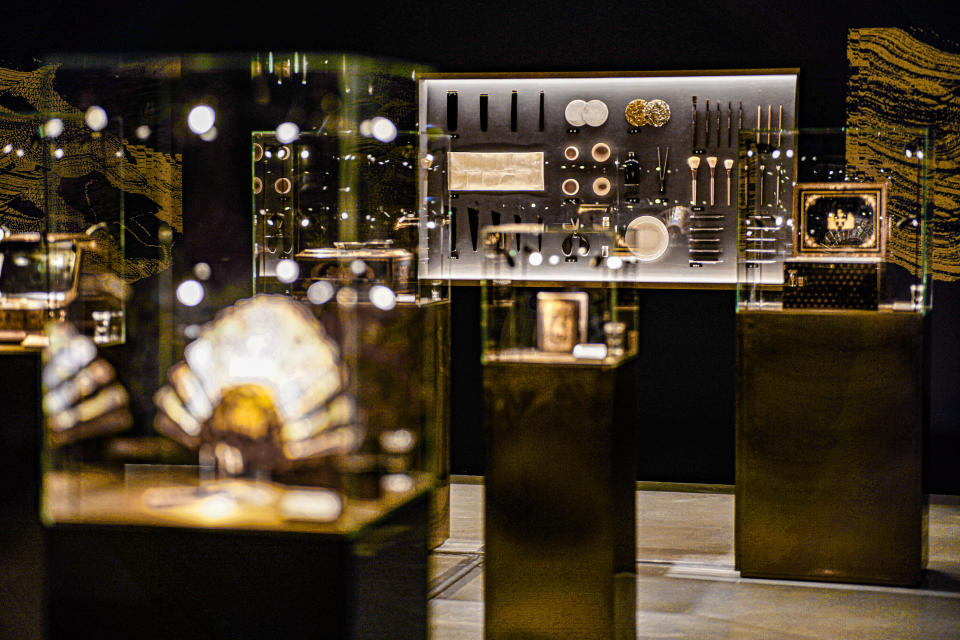
I think Hong Kong can be an epicenter of Asia because it is a fusion of East and West and exhibits the best of both worlds. So Hong Kong will have this role in the future in terms of cultural exchange.
The Asian countries are celebrating their own heritage. People are still appreciating the Western fashion brands, but now you see a lot of domestic fashion that people are embracing. For example, an entire floor of K11 in Guangzhou is dedicated to homegrown fashion designers. Some are Western-educated and coming back and some of them trained in fashion domestically, so it is a big paradigm shift as well.
My ultimate goal is for K11 to be globally known for its museum retail concept, and bringing the best of art and culture to Asia from all over the world.
